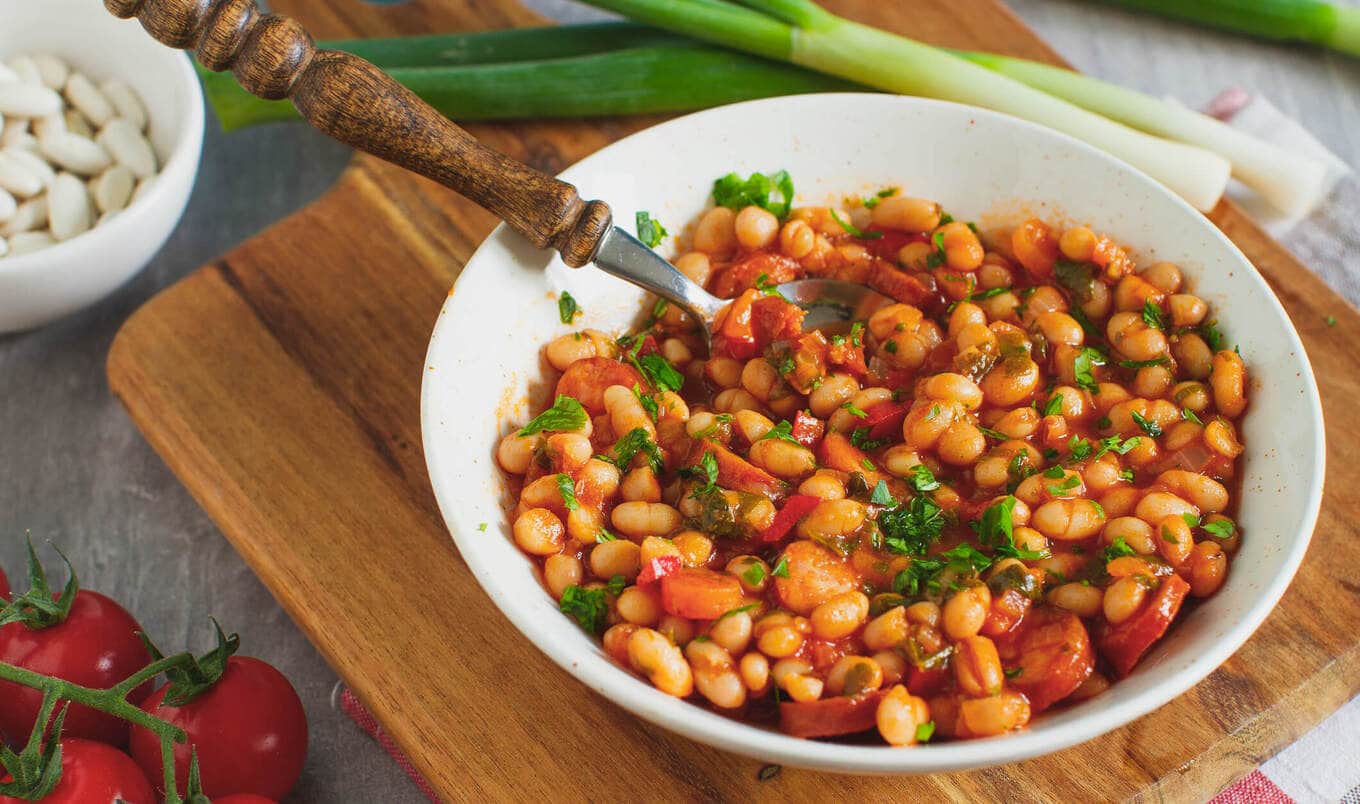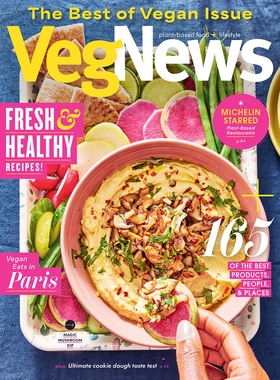The 2025 Dietary Guidelines Advisory Committee (DGAC) is proposing a sweeping reorganization of the protein food group—with plant-based proteins like beans, lentils, peas, nuts, seeds, and soy products taking center stage. While the final guidelines won’t be released until later this year, the implications of the DGAC’s scientific report could reshape everything from school lunch menus to national food assistance programs.
Backed by nearly two years of rigorous review, the DGAC’s findings serve as the scientific bedrock for the forthcoming 2025 to 2030 Dietary Guidelines for Americans (DGA). These federal recommendations impact what millions of Americans eat each day and guide nutrition education, food labeling, and public health initiatives.
A national dietary pivot
One of the most consequential takeaways from the report is its unequivocal support for plant-based proteins as a primary source of dietary protein.
“The report recommends reducing red and processed meat intake while increasing consumption of beans, peas, lentils, and other plant-based protein sources due to their health benefits,” DGAC member Fatima Cody Stanford, MD, associate professor of medicine at Massachusetts General Hospital, told Food & Wine.
 AD077
AD077
The emphasis on plant-based proteins reflects an ongoing shift in nutritional science that links these foods to reduced risks of chronic disease. Beans and lentils, for example, are not only rich in protein but also loaded with fiber, iron, potassium, folate, and other essential micronutrients.
Kris Sollid, RD, senior director of research and consumer insights at the International Food Information Council, highlighted the dual benefit of these foods. More beans, peas, and lentils are being emphasized because they “are protein sources that also provide dietary fiber, a nutrient that Americans do not consume enough of.”
How does this compare to past guidelines?
The plant-forward approach marks a notable departure from earlier guidelines. In the 2015 and 2020 editions, the Dietary Guidelines acknowledged the benefits of plant-based diets but did not structurally reorganize the food groups to reflect this preference.
In contrast, the 2025 DGAC proposes an explicit reprioritization, signaling a broader cultural and scientific shift toward plant-forward nutrition.
Other nations have been quicker to integrate plant-based priorities into national dietary guidance. Canada’s 2019 Food Guide, for example, significantly reduced the prominence of meat and dairy, promoting plant-based foods as the foundation of a healthy diet. Brazil’s dietary guidelines explicitly discourage ultra-processed foods and emphasize minimally processed, culturally appropriate meals.
In contrast, US guidelines have historically avoided direct calls to reduce animal products, often due to industry influence. The 2025 DGAC’s recommendations represent the boldest language yet around reducing red and processed meat.
America’s fiber gap
Fiber deficiency is one of the most pressing nutritional shortfalls in the US. In fact, 95 percent of American adults fail to meet the recommended daily intake for dietary fiber, a fact that underpins many of the report’s recommendations. By moving plant-based proteins to the forefront of the protein food group, the DGAC is attempting to address this long-standing gap.
 Getty
Getty
This reclassification also aligns with emerging evidence that greater fiber intake correlates with lower risks of heart disease, stroke, Type 2 diabetes, and certain cancers. It also supports gut health and weight regulation.
A reordered protein hierarchy
Beyond simply encouraging more lentils and legumes, the DGAC has proposed a full restructuring of how protein foods are organized within federal nutrition guidance. For the first time, beans, peas, and lentils would appear first in the protein group—a symbolic and practical elevation of their importance.
Heather A. Eicher-Miller, PhD, professor of nutrition science at Purdue University and DGAC member, explained the committee now recommends “the protein group be reorganized to first emphasize and include beans, peas, and lentils; then nuts, seeds, and soy products; then seafood; and then meat, poultry, and eggs.”
“This new order prioritizes plant-based proteins, reflecting their health advantages and promoting more sustainable food choices,” Stanford said.
Sustainability and public health: a dual focus
Though the committee’s report focuses primarily on health outcomes, sustainability is an unspoken but critical throughline. Reducing red and processed meat consumption not only has measurable health benefits, but also lowers greenhouse gas emissions and environmental degradation associated with animal agriculture.
BECOME A VEGNEWS VIP: Get exclusive product deals, freebies, and perks galore!
While the US guidelines have historically avoided explicit sustainability goals, recent public health discourse increasingly considers the environmental impact of dietary patterns. This protein reordering may be the most direct nod yet to the convergence of personal and planetary health.
‘Eat healthy your way’
Another major shift comes in the form of a simplified, flexible dietary pattern called “Eat Healthy Your Way.” This model consolidates previous patterns—like Mediterranean, vegetarian, and healthy US-style diets—into one adaptable framework.
“[It] encourages greater intake of plant-based foods while still allowing for animal-based options,” Stanford explained. It aims to accommodate diverse preferences, cultural foodways, and varying budgets.
Key features of this model include:
-
Prioritizing fruits and vegetables as dietary cornerstones
-
Favoring whole grains over refined grains
-
Recommending low-fat dairy or fortified soy-based alternatives
-
Replacing saturated fats with vegetable oils
-
Elevating plant-based proteins as the primary source of protein
Dr. Eicher-Miller noted that this consolidated framework was created to help Americans more easily meet protein and nutrient recommendations without adhering to a rigid plan.
The ultra-processed conundrum
One area where the DGAC fell short of issuing decisive guidance was on ultra-processed foods (UPFs). These products—which include items like sodas, snack cakes, frozen meals, and some packaged breads—are often linked to negative health outcomes, including obesity, cardiovascular disease, and cancer.
Despite this, the report stopped short of recommending limits on UPFs. The reason? Inconsistent definitions and a fragmented scientific literature.
 Canva
Canva
“The report did not include recommendations on ultra-processed foods due to insufficient evidence and inconsistencies in defining and classifying ultra-processed foods in scientific literature,” Stanford acknowledged.
This lack of clarity mirrors debates in global nutrition circles. While some countries, such as Brazil, have incorporated strong warnings about UPFs in national dietary policies, the US remains cautious while it waits for more standardized criteria.
What happens next?
The DGAC report is not law. Rather, it serves as a scientific recommendation to the US Department of Agriculture (USDA) and the Department of Health and Human Services (HHS), which are jointly responsible for crafting the official 2025 to 2030 Dietary Guidelines for Americans. Those guidelines are expected to be finalized and released later this year.
“It is important to remember that while the DGAC Report is the foundation upon which the Dietary Guidelines are built, the DGAC Report is not the Dietary Guidelines,” Sollid emphasized. “There is no crystal ball.”
Public comments, industry lobbying, and political considerations all play a role in the final outcome. Still, the current direction is clear: nutrition science is increasingly aligning with long-standing calls to center plant-based foods in American diets.
Not everyone is cheering the plant-forward shift, though. The beef industry and its allies have already criticized the DGAC’s draft, with one industry leader labeling the proposed protein restructuring “elitist.”
Whether the USDA and HHS adopt the DGAC’s recommendations wholesale or revise them under pressure, this year’s guidelines will be among the most consequential yet. At stake are billions in food procurement, the nutritional well-being of millions of Americans, and the long-term sustainability of the food system.
As federal agencies move toward finalizing the 2025 Dietary Guidelines, one thing is evident: beans, lentils, and other humble plant foods are no longer side dishes—they are being asked to take the main stage in shaping the future of American nutrition.
For more plant-based stories like this, read:
JUMP TO ... Latest News | Recipes | Guides | Health | Subscribe








